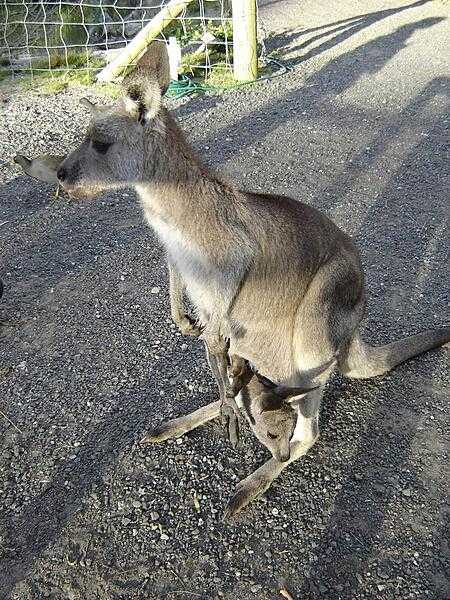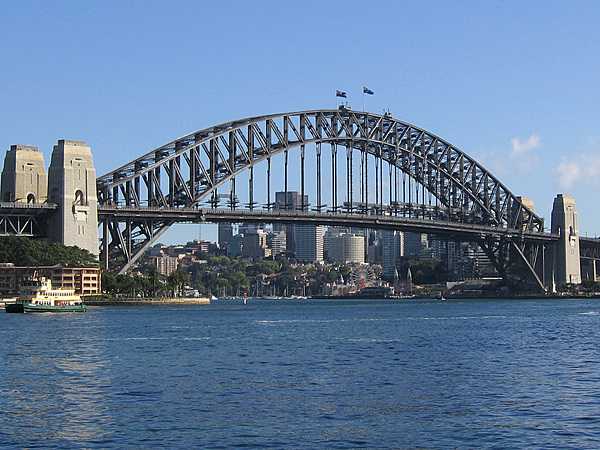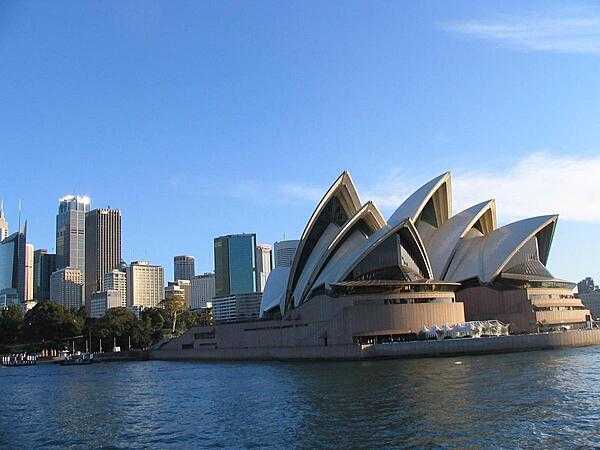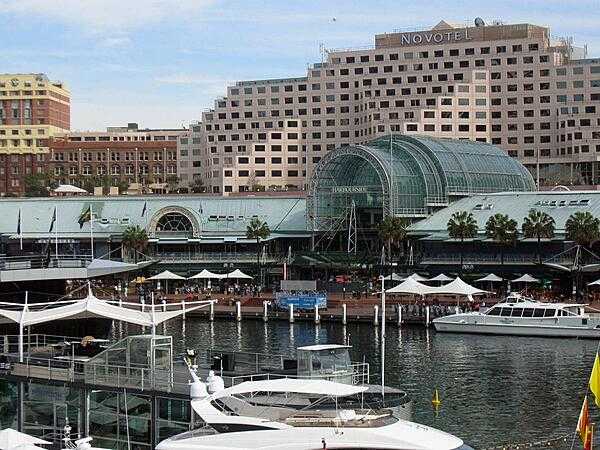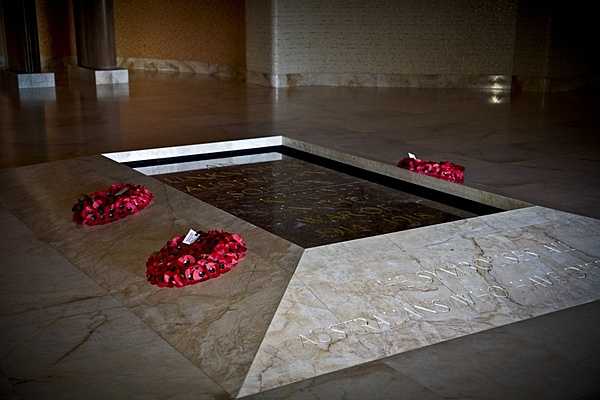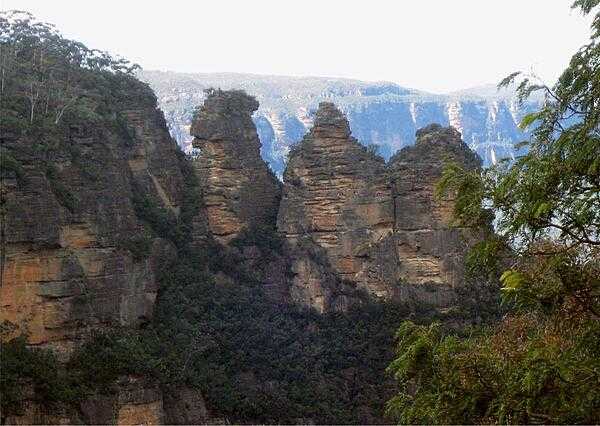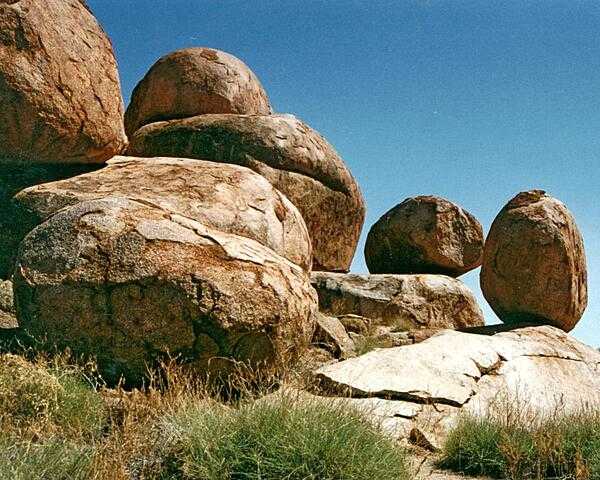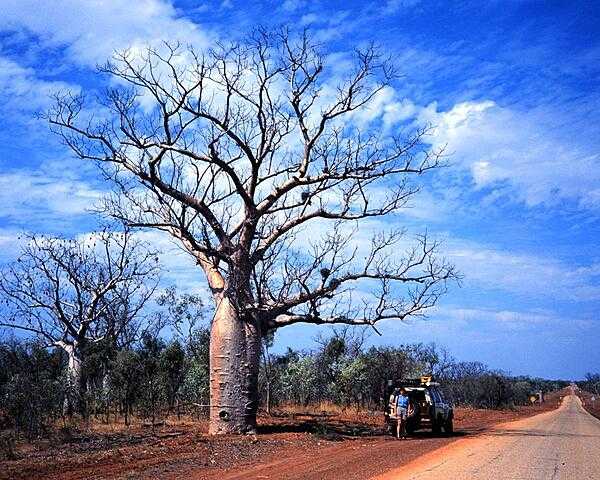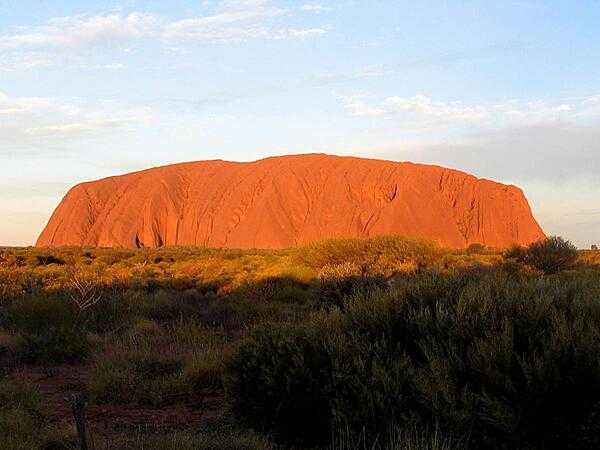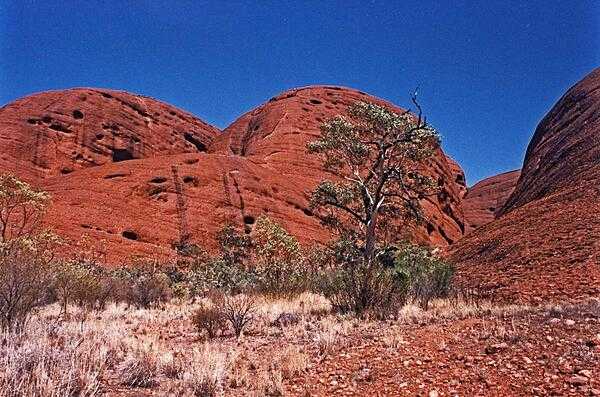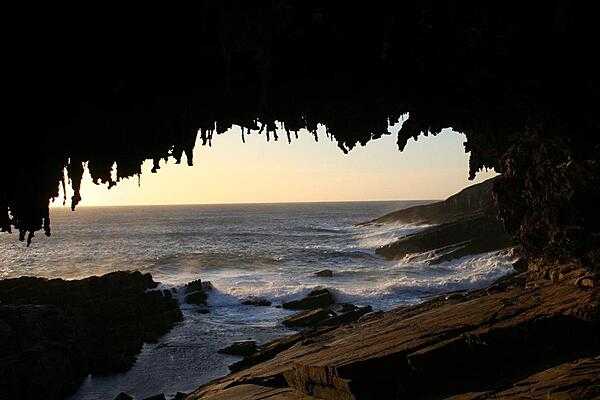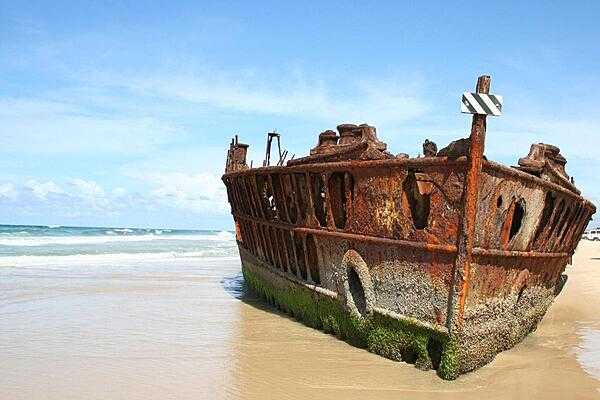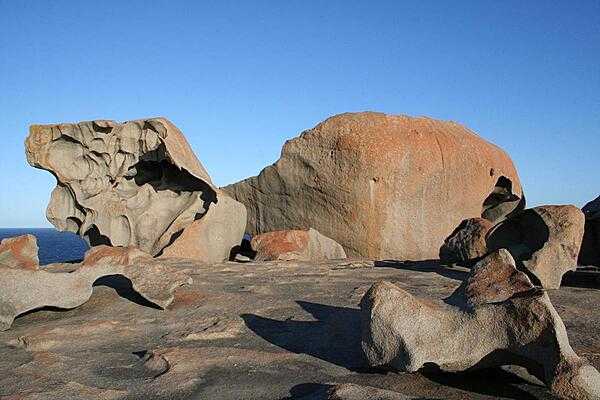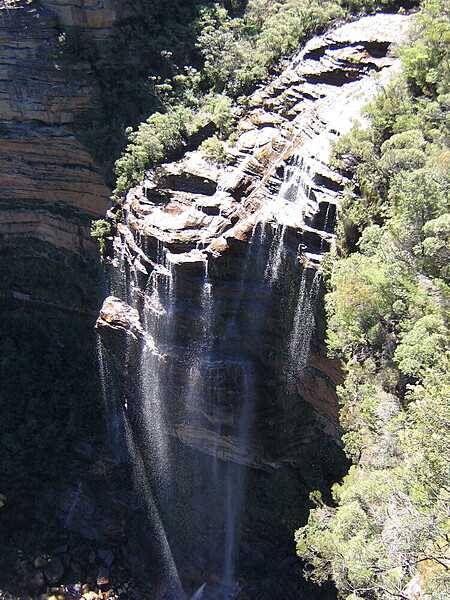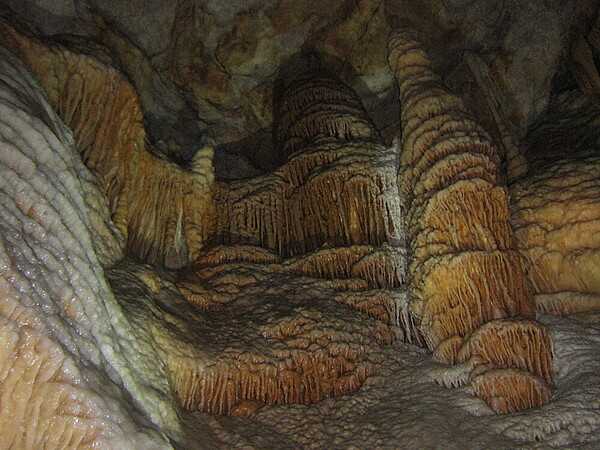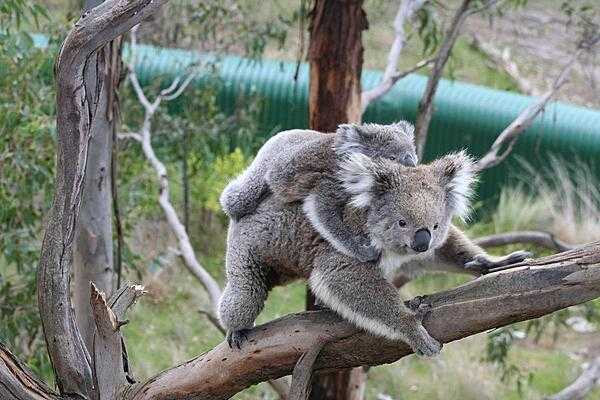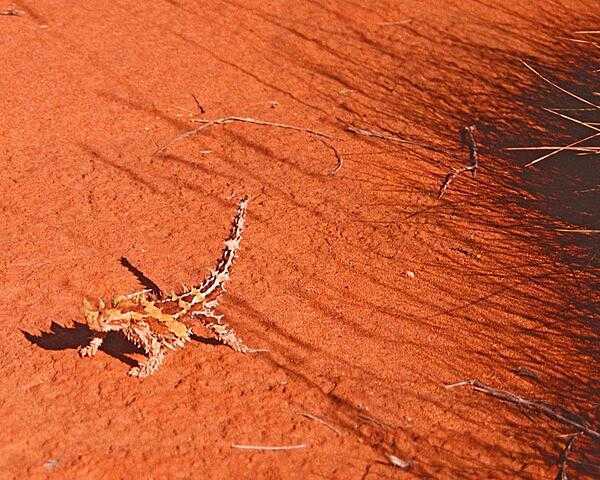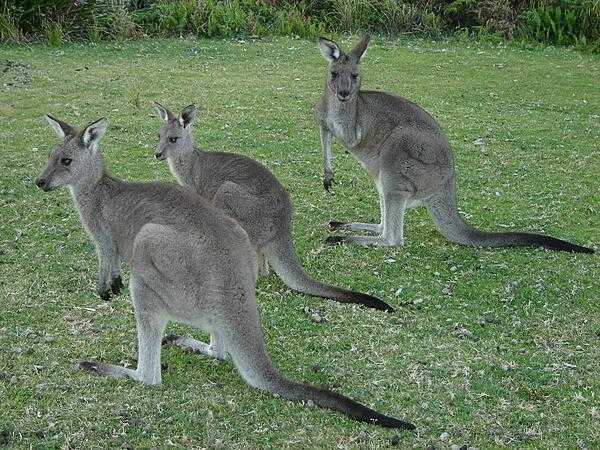Australia - AU - AUS - AUS - Australia and Oceania
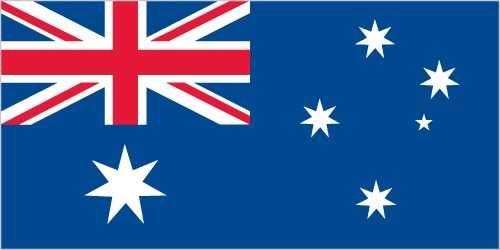
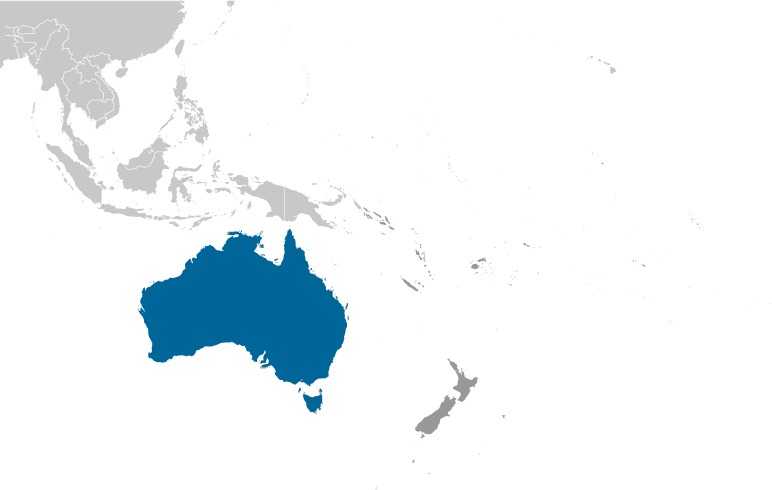
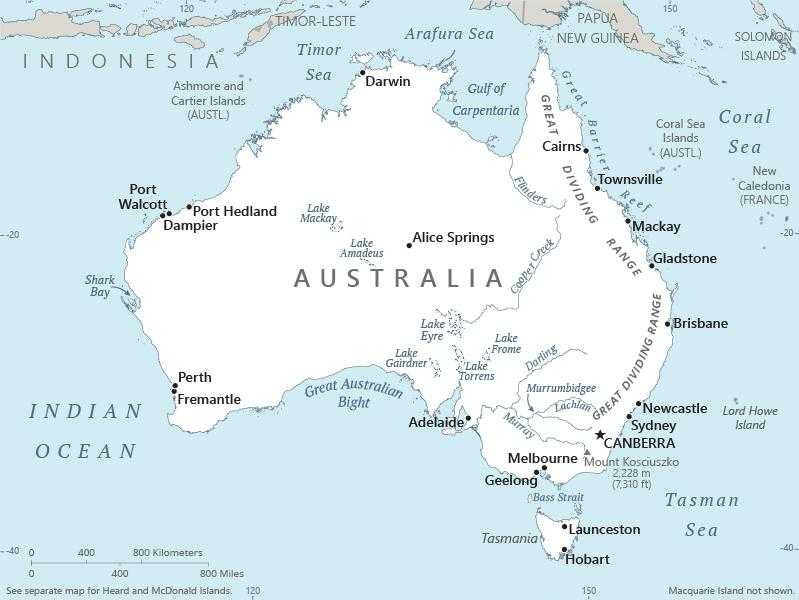
Australia Images
Australia Factbook Data
Diplomatic representation from the US
embassy: Moonah Place, Yarralumla, Australian Capital Territory 2600
mailing address: 7800 Canberra Place, Washington DC 20512-7800
telephone: [61] (02) 6214-5600
FAX: [61] (02) 9373-9184
email address and website:
AskEmbassyCanberra@state.gov
https://au.usembassy.gov/
consulate(s) general: Melbourne, Perth, Sydney
Age structure
15-64 years: 64.7% (male 8,688,023/female 8,640,671)
65 years and over: 17% (2024 est.) (male 2,090,315/female 2,453,392)

For additional information, please see the entry for Population pyramid on the Definitions and Notes page.
Geographic coordinates
Sex ratio
0-14 years: 1.07 male(s)/female
15-64 years: 1.01 male(s)/female
65 years and over: 0.85 male(s)/female
total population: 0.99 male(s)/female (2024 est.)
Natural hazards
volcanism: volcanic activity on Heard and McDonald Islands
Area - comparative
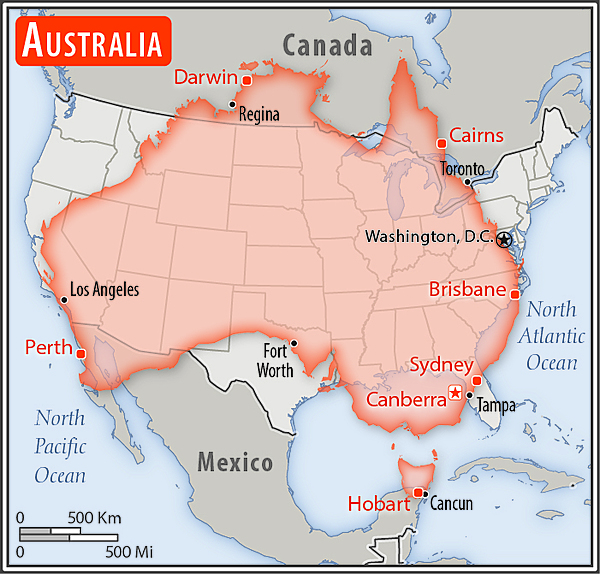
slightly smaller than the US contiguous 48 states
Military service age and obligation
note 1: as of July 2024, New Zealanders who are permanent residents and have lived in Australia for at least 12 months could apply to join the ADF; from January 2025, eligible permanent residents from Canada, the UK, and the US were also to be allowed to apply
note 2: women have served in all roles, including combat arms, since 2013; in 2024, they comprised slightly more than 20% of the military
Background
Aboriginal Australians arrived on the continent at least 60,000 years ago and developed complex hunter-gatherer societies and oral histories. Dutch navigators led by Abel TASMAN were the first Europeans to land in Australia in 1606, and they mapped the western and northern coasts. They named the continent New Holland but made no attempts to permanently settle it. In 1770, Englishman James COOK sailed to the east coast of Australia, named it New South Wales, and claimed it for Great Britain. In 1788 and 1825 respectively, Great Britain established New South Wales and then Tasmania as penal colonies. Great Britain and Ireland sent more than 150,000 convicts to Australia before ending the practice in 1868. As Europeans began settling areas away from the coasts, they came into more direct contact with Aboriginal Australians. Europeans also cleared land for agriculture, impacting Aboriginal Australians’ ways of life. These issues, along with disease and a policy in the 1900s that forcefully removed Aboriginal children from their parents, reduced the Aboriginal Australian population from more than 700,000 pre-European contact to a low of 74,000 in 1933.
Four additional colonies were established in Australia in the mid-1800s: Western Australia (1829), South Australia (1836), Victoria (1851), and Queensland (1859). Gold rushes beginning in the 1850s brought thousands of new immigrants to New South Wales and Victoria, helping to reorient Australia away from its penal colony roots. In the second half of the 1800s, the colonies were all gradually granted self-government, and in 1901, they federated and became the Commonwealth of Australia. Australia contributed more than 400,000 troops to Allied efforts during World War I, and Australian troops played a large role in the defeat of Japanese troops in the Pacific in World War II. Australia severed most constitutional links with the UK in 1942 but remained part of the British Commonwealth. Australia’s post-war economy boomed and by the 1970s, racial policies that prevented most non-Whites from immigrating to Australia were removed, greatly increasing Asian immigration to the country. In recent decades, Australia has become an internationally competitive, advanced market economy due in large part to economic reforms adopted in the 1980s and its proximity to East and Southeast Asia.
In the early 2000s, Australian politics became unstable with frequent attempts to oust party leaders, including five changes of prime minister between 2010 and 2018. As a result, both major parties instituted rules to make it harder to remove a party leader.
Environmental issues
International environmental agreements
signed, but not ratified: none of the selected agreements
Military expenditures
2% of GDP (2023 est.)
2% of GDP (2022 est.)
2% of GDP (2021 est.)
2% of GDP (2020 est.)
Household income or consumption by percentage share
highest 10%: 26.2% (2018 est.)
note: % share of income accruing to lowest and highest 10% of population
Exports - commodities
note: top five export commodities based on value in dollars
Exports - partners
note: top five export partners based on percentage share of exports
Administrative divisions
Agricultural products
note: top ten agricultural products based on tonnage
Military and security forces
note: the Australian Federal Police (AFP) is an independent agency of the Attorney-General’s Department; the AFP, state, and territorial police forces are responsible for internal security; the Australian Border Force (ABF) is under the Department of Home Affairs
Budget
expenditures: $453.105 billion (2022 est.)
note: central government revenues (excluding grants) and expenditures converted to US dollars at average official exchange rate for year indicated
Capital
geographic coordinates: 35 16 S, 149 08 E
time difference: UTC+11 (16 hours ahead of Washington, DC, during Standard Time)
daylight saving time: +1hr, begins first Sunday in October; ends first Sunday in April
time zone note: Australia has six time zones, including Lord Howe Island (UTC+11)
etymology: the name may derive from the Aboriginal word nganbirra, meaning "meeting place"
Imports - commodities
note: top five import commodities based on value in dollars
Climate
Coastline
Constitution
amendment process: proposed by Parliament; passage requires approval of a referendum bill by absolute majority vote in both houses of Parliament, approval in a referendum by a majority of voters in at least four states and in the territories, and Royal Assent; proposals that would reduce a state’s representation in either house or change a state’s boundaries require that state’s approval prior to Royal Assent
Dependent areas
Exchange rates
Exchange rates:
1.515 (2024 est.)
1.505 (2023 est.)
1.442 (2022 est.)
1.331 (2021 est.)
1.453 (2020 est.)
Executive branch
head of government: Prime Minister Anthony ALBANESE (since 23 May 2022)
cabinet: Cabinet nominated by the prime minister from among members of Parliament and sworn in by the governor general
election/appointment process: the monarchy is hereditary; governor general appointed by the monarch on the recommendation of the prime minister; following legislative elections, the leader of the majority party or majority coalition is sworn in as prime minister by the governor general
Flag
meaning: the largest star is known as the Commonwealth or Federation Star and represents the federation of the Australian colonies in 1901; the star has one point for each of the six original states, plus one representing all of Australia's internal and external territories
Independence
Industries
Judicial branch
judge selection and term of office: justices appointed by the governor-general in council for life with mandatory retirement at age 70
subordinate courts: subordinate courts: at the federal level: Federal Court; Federal Circuit and Family Court of Australia; at the state and territory level: Local Court - New South Wales; Magistrates' Courts – Victoria, Queensland, South Australia, Western Australia, Tasmania, Northern Territory, Australian Capital Territory; District Courts – New South Wales, Queensland, South Australia, Western Australia; County Court – Victoria; Family Court – Western Australia; Court of Petty Sessions – Norfolk Island
Land boundaries
Legal system
Legislative branch
legislative structure: bicameral
Maritime claims
contiguous zone: 24 nm
exclusive economic zone: 200 nm
continental shelf: 200 nm or to the edge of the continental margin
International organization participation
National holiday
Nationality
adjective: Australian
Natural resources
note 1: Australia is the world's largest net exporter of coal accounting for 26.5% of global coal exports in 2021; coal is the country’s most abundant energy resource, and coal ranks as the second-largest export commodity from Australia in terms of revenue; in 2020, Australia held the third-largest recoverable coal reserves in the world behind the United States and Russia
note 2: Australia is by far the world's largest supplier of opals
note 3: Australia holds the largest uranium reserves in the world and was the second-largest global uranium producer behind Kazakhstan in 2020
note 4: Australia was the largest exporter of LNG in the world in 2020
Geography - note
note 2: the Great Dividing Range that runs along eastern Australia is that continent’s longest mountain range and the third-longest land-based range in the world; the term "Great Dividing Range" refers to the fact that the mountains form a watershed crest from which all of the rivers of eastern Australia flow – east, west, north, and south
note 3: Australia is the only continent without glaciers; it is the driest inhabited continent on earth; Perth on the west coast is home to the invigorating sea breeze known as the "Fremantle Doctor," one of the most consistent winds in the world; Australia hosts 10% of the world's biodiversity, and a great number of its flora and fauna exist nowhere else in the world
Economic overview
high-income and globally integrated economy; strong mining, manufacturing, and service sectors driving slow but steady growth; net exporter, driven by commodities to East Asian trade partners; weak productivity and aging population straining labor force participation
Political parties
Australian Labor Party or ALP
Centre Alliance (formerly known as the Nick Xenophon Team or NXT)
Jacqui Lambie Network or JLN
Katter's Australian Party (KAP)
Liberal Party of Australia
Liberal National Party of Queensland
The Nationals
One Nation or ONP
United Australia Party
note: the Labor Party is Australia’s oldest political party, established federally in 1901; the present Liberal Party was formed in 1944; the Country Party was formed in 1920, renamed the National Country Party in 1975, the National Party of Australia in 1982, and since 2003 has been known as the Nationals; since the general election of 1949, the Liberal Party and the Nationals (under various names) when forming government have done so as a coalition
Railways
standard gauge: 18,007 km (2022) 1.435 mm
narrow gauge: 11,914 km (2022) 1.067 mm
broad gauge: 2,685 km (2022) 1.600 mm
Suffrage
Terrain
Government type
Country name
conventional short form: Australia
etymology: the name Australia derives from the Latin australis meaning "southern;" the Australian landmass was long referred to as "Terra Australis," or the Southern Land
Location
Map references
Irrigated land
Diplomatic representation in the US
chancery: 1601 Massachusetts Avenue NW, Washington, DC 20036
telephone: [1] (202) 797-3000
FAX: [1] (202) 797-3168
email address and website:
info.us@dfat.gov.au
https://usa.embassy.gov.au/
consulate(s) general: Chicago, Honolulu, Houston, Los Angeles, New York, San Francisco
Internet users
Internet country code
Refugees and internally displaced persons
IDPs: 185 (2024 est.)
stateless persons: 6,922 (2024 est.)
GDP (official exchange rate)
note: data in current dollars at official exchange rate
Total renewable water resources
School life expectancy (primary to tertiary education)
male: 20 years (2023 est.)
female: 21 years (2023 est.)
Urbanization
rate of urbanization: 1.27% annual rate of change (2020-25 est.)
note: data include Christmas Island, Cocos Islands, and Norfolk Island
Broadcast media
Drinking water source
urban: 100% of population (2022 est.)
rural: 100% of population (2022 est.)
total: 100% of population (2022 est.)
unimproved:
urban: 0% of population (2022 est.)
rural: 0% of population (2022 est.)
total: 0% of population (2022 est.)
National anthem(s)
lyrics/music: Peter Dodds McCORMICK
history: adopted 1984; although originally written in the late 19th century, the anthem was not used for all official occasions until 1984
_____
title: "God Save the King"
lyrics/music: unknown
history: royal anthem, as a Commonwealth country
note: the well-known and much-loved bush ballad "Waltzing Matilda" is often referred to as Australia's unofficial national anthem; Australian poet Banjo PATERSON wrote the original lyrics in 1895, and they were first published as sheet music in 1903; since 2012, a Waltzing Matilda Day has been held annually on 6 April, the anniversary of the first performance of the song in 1895
Major urban areas - population
International law organization participation
Physician density
Hospital bed density
National symbol(s)
Mother's mean age at first birth
GDP - composition, by end use
government consumption: 22.2% (2024 est.)
investment in fixed capital: 24.3% (2024 est.)
investment in inventories: 0.1% (2024 est.)
exports of goods and services: 24.7% (2024 est.)
imports of goods and services: -22.6% (2024 est.)
note: figures may not total 100% due to rounding or gaps in data collection
Dependency ratios
youth dependency ratio: 28.3 (2024 est.)
elderly dependency ratio: 26.2 (2024 est.)
potential support ratio: 3.8 (2024 est.)
Citizenship
citizenship by descent only: at least one parent must be a citizen or permanent resident of Australia
dual citizenship recognized: yes
residency requirement for naturalization: 4 years
Population distribution
Electricity access
Civil aircraft registration country code prefix
Sanitation facility access
total: 100% of population (2022 est.)
unimproved:
total: 0% of population (2022 est.)
Ethnic groups
note: data represent self-identified ancestry, with the option of reporting two ancestries
Religions
Languages
note: data represent language spoken at home
Imports - partners
note: top five import partners based on percentage share of imports
Elevation
lowest point: Lake Eyre -15 m
mean elevation: 330 m
Health expenditure
20.2% of national budget (2022 est.)
Military - note
Australia has been part of the Australia, New Zealand, and US Security (ANZUS) Treaty since 1951; Australia is also a member of the Five Powers Defense Arrangements (FPDA), a series of mutual assistance agreements reached in 1971 embracing Australia, Malaysia, New Zealand, Singapore, and the UK
Australia has long-standing bi-lateral defense and security ties to the UK, including defense and security cooperation treaties in 2024 and 2013; the Australia-UK Ministerial Consultations (AUKMIN) is their premier bilateral forum on foreign policy, defense, and security issues
Australia also has a long-standing military relationship with the US; Australian and US forces first fought together in France in 1918 and have fought together in every major US conflict since; Australia and the US signed an agreement in 2014 that allowed for closer bi-lateral defense and security cooperation, including rotations of US military forces and equipment to Australia; Australian military forces train often with US forces; Australia has Major Non-NATO Ally (MNNA) status with the US, a designation under US law that provides foreign partners with certain benefits in the areas of defense trade and security cooperation
in 2021, Australia, the UK, and the US announced an enhanced trilateral security partnership called “AUKUS” which would build on existing bilateral ties, including deeper integration of defense and security-related science, technology, industrial bases, and supply chains, as well as deeper cooperation on a range of defense and security capabilities (2025)
Military and security service personnel strengths
Military equipment inventories and acquisitions
note: in 2023, the Australian defense ministry announced a new strategic review that called for the acquisition of more long-range deterrence capabilities, including missiles, submarines, and cyber tools; in early 2024, Australia announced a 10-year plan to more than double the number of the Navy's major surface combatant ships
Military deployments
Terrorist group(s)
note: details about the history, aims, leadership, organization, areas of operation, tactics, targets, weapons, size, and sources of support of the group(s) appear(s) in the Terrorism reference guide
Total water withdrawal
industrial: 3.11 billion cubic meters (2022)
agricultural: 11.19 billion cubic meters (2022)
Waste and recycling
percent of municipal solid waste recycled: 52.9% (2022 est.)
Average household expenditures
on alcohol and tobacco: 3.6% of household expenditures (2023 est.)
Major lakes (area sq km)
salt water lake(s): Lake Eyre - 9,690 sq km; Lake Torrens (ephemeral) - 5,780 sq km; Lake Gairdner - 4,470 sq km; Lake Mackay (ephemeral) - 3,494 sq km; Lake Frome - 2,410 sq km; Lake Amadeus (ephemeral) - 1,032 sq km
Major watersheds (area sq km)
Internal (endorheic basin) drainage: Lake Eyre (1,212,198 sq km)
Major rivers (by length in km)
Major aquifers
National heritage
selected World Heritage Site locales: Great Barrier Reef (n); Greater Blue Mountains Area (n); Fraser Island (n); Gondwana Rainforests (n); Lord Howe Island Group (n); Royal Exhibition Building and Carlton Gardens (c); Shark Bay (n); Sydney Opera House (c); Uluṟu-Kata Tjuṯa National Park (m); Kakadu National Park (m); Murujuga Cultural Landscape (c)
note: includes one site on Heard Island and McDonald Islands
Petroleum
refined petroleum consumption: 1.151 million bbl/day (2024 est.)
crude oil estimated reserves: 2.446 billion barrels (2021 est.)
Coal
consumption: 95.667 million metric tons (2023 est.)
exports: 348.32 million metric tons (2023 est.)
imports: 630,000 metric tons (2023 est.)
proven reserves: 149.472 billion metric tons (2023 est.)
Electricity generation sources
solar: 17.1% of total installed capacity (2023 est.)
wind: 11.5% of total installed capacity (2023 est.)
hydroelectricity: 5.4% of total installed capacity (2023 est.)
biomass and waste: 1.1% of total installed capacity (2023 est.)
Natural gas
consumption: 48.845 billion cubic meters (2023 est.)
exports: 105.146 billion cubic meters (2023 est.)
imports: 521.034 million cubic meters (2023 est.)
proven reserves: 3.228 trillion cubic meters (2021 est.)
Gross reproduction rate
Remittances
0.1% of GDP (2023 est.)
0.1% of GDP (2022 est.)
note: personal transfers and compensation between resident and non-resident individuals/households/entities
Space agency/agencies
note: Australia established a Defense Space Command in 2022
Space launch site(s)
Ports
large: 5
medium: 8
small: 24
very small: 29
ports with oil terminals: 38
key ports: Brisbane, Dampier, Darwin, Fremantle, Geelong, Hobart, Melbourne, Newcastle, Port Adelaide, Port Dalrymple, Port Kembla, Port Lincoln, Sydney
Legislative branch - lower chamber
number of seats: 150 (all directly elected)
electoral system: plurality/majority
scope of elections: full renewal
term in office: 3 years
most recent election date: 5/3/2025
parties elected and seats per party: Australian Labor Party (ALP) (94); Liberal National coalition (43); Independents (10); Other (3)
percentage of women in chamber: 46%
expected date of next election: May 2028
Legislative branch - upper chamber
number of seats: 76 (all directly elected)
electoral system: proportional representation
scope of elections: partial renewal
term in office: 6 years
most recent election date: 5/3/2025
parties elected and seats per party: Australian Labor Party (ALP) (16); Liberal (6); The Greens (6); Liberal/Nationals (4); Pauline Hanson's One Nation (3); Liberal National Party of Queensland (2); Other (3)
percentage of women in chamber: 56.6%
expected date of next election: May 2028
National coat of arms
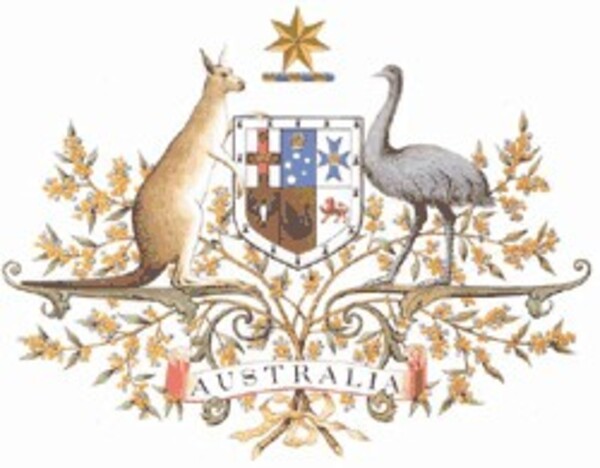
National color(s)
Methane emissions
agriculture: 2,382.2 kt (2019-2021 est.)
waste: 587.8 kt (2019-2021 est.)
other: 144.1 kt (2019-2021 est.)
Particulate matter emissions
Labor force
note: number of people ages 15 or older who are employed or seeking work
Youth unemployment rate (ages 15-24)
male: 10.2% (2024 est.)
female: 8.7% (2024 est.)
note: % of labor force ages 15-24 seeking employment
Net migration rate
Median age
male: 36.9 years
female: 39.2 years
Maternal mortality ratio
Reserves of foreign exchange and gold
$61.703 billion (2023 est.)
$56.702 billion (2022 est.)
note: holdings of gold (year-end prices)/foreign exchange/special drawing rights in current dollars
Public debt
note: central government debt as a % of GDP
Total fertility rate
Unemployment rate
3.7% (2023 est.)
3.8% (2022 est.)
note: % of labor force seeking employment
Population
male: 13,305,110
female: 13,463,488
Carbon dioxide emissions
from coal and metallurgical coke: 146.81 million metric tonnes of CO2 (2023 est.)
from petroleum and other liquids: 154.346 million metric tonnes of CO2 (2023 est.)
from consumed natural gas: 93.497 million metric tonnes of CO2 (2023 est.)
Area
land: 7,682,300 sq km
water: 58,920 sq km
note: includes Lord Howe Island and Macquarie Island
Taxes and other revenues
note: central government tax revenue as a % of GDP
Real GDP (purchasing power parity)
$1.611 trillion (2023 est.)
$1.558 trillion (2022 est.)
note: data in 2021 dollars
Airports
Infant mortality rate
male: 3.2 deaths/1,000 live births
female: 2.7 deaths/1,000 live births
Telephones - mobile cellular
subscriptions per 100 inhabitants: 107 (2022 est.)
Gini Index coefficient - distribution of family income
note: index (0-100) of income distribution; higher values represent greater inequality
Inflation rate (consumer prices)
5.6% (2023 est.)
6.6% (2022 est.)
note: annual % change based on consumer prices
Current account balance
-$5.186 billion (2023 est.)
$5.707 billion (2022 est.)
note: balance of payments - net trade and primary/secondary income in current dollars
Real GDP per capita
$60,500 (2023 est.)
$59,900 (2022 est.)
note: data in 2021 dollars
Broadband - fixed subscriptions
subscriptions per 100 inhabitants: 36 (2023 est.)
Tobacco use
male: 13.6% (2025 est.)
female: 9.2% (2025 est.)
Obesity - adult prevalence rate
Energy consumption per capita
Death rate
Birth rate
Electricity
consumption: 267.818 billion kWh (2023 est.)
transmission/distribution losses: 11.455 billion kWh (2023 est.)
Merchant marine
by type: bulk carrier 2, general cargo 76, oil tanker 6, other 520
Imports
$389.211 billion (2023 est.)
$379.981 billion (2022 est.)
note: balance of payments - imports of goods and services in current dollars
Exports
$448.507 billion (2023 est.)
$465.99 billion (2022 est.)
note: balance of payments - exports of goods and services in current dollars
Heliports
Telephones - fixed lines
subscriptions per 100 inhabitants: 24 (2023 est.)
Alcohol consumption per capita
beer: 3.71 liters of pure alcohol (2019 est.)
wine: 3.67 liters of pure alcohol (2019 est.)
spirits: 1.32 liters of pure alcohol (2019 est.)
other alcohols: 0.81 liters of pure alcohol (2019 est.)
Life expectancy at birth
male: 81.3 years
female: 85.7 years
Real GDP growth rate
3.4% (2023 est.)
4.2% (2022 est.)
note: annual GDP % growth based on constant local currency
Industrial production growth rate
note: annual % change in industrial value added based on constant local currency
GDP - composition, by sector of origin
industry: 26% (2024 est.)
services: 65.5% (2024 est.)
note: figures may not total 100% due to non-allocated consumption not captured in sector-reported data
Population growth rate
Land use
arable land: 4% (2023 est.)
permanent crops: 0.1% (2023 est.)
permanent pasture: 43.1% (2023 est.)
forest: 17.3% (2023 est.)
other: 35.4% (2023 est.)
Space program overview
Currently married women (ages 15-49)
Key space-program milestones
1967 - first domestically built satellite (WRSEA) launched on a US rocket from Australian test range
1981 - commissioned first national satellite system
1996 - first Australian in space on US Space Shuttle
2021 - announced intent to provide a robotic lunar lander for US Artemis project
2022 - launched a US NASA rocket from a commercial launch site; joint Australia-US space surveillance telescope based in Western Australia became operational
2025 - first attempted launch of Australian-designed and -manufactured orbital launch vehicle failed to reach orbit
Education expenditure
12.7% national budget (2022 est.)
